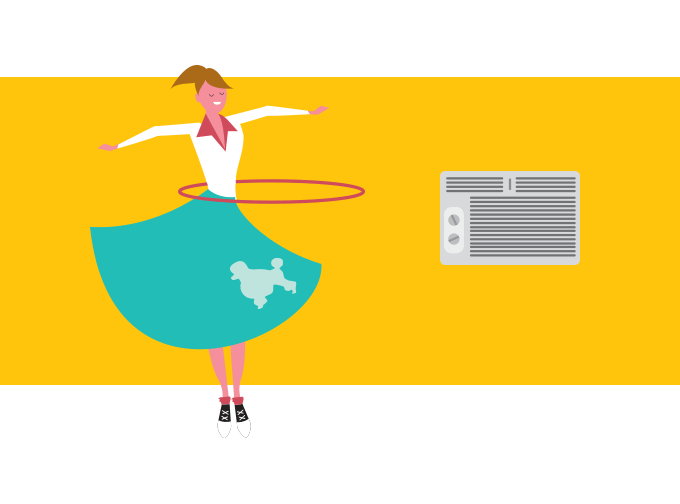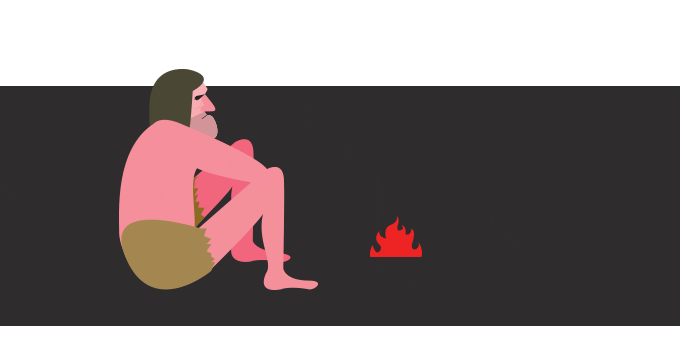Air conditioning. Pretty simple stuff, isn't it? Touch the button on the thermostat, lower the temperature setting and with a click and a whoosh, cool air comes out. What could be simpler? We're fortunate to live in a time of cold-on-demand, when equipment you don't even have to see keeps your home perfect as it quietly churns in the background.
Air conditioning through the years.
It didn't used to be so easy. In fact, the earliest home cooling solutions were about as primitive as they could be, using the same method your body uses to keep cool. Namely, evaporation. Ancient Egyptians hung pieces of vegetation in the window and kept them wet, which allowed them to cool the air as it entered the house.
Air conditioning's next big advancement didn't move the bar very far, centering around the concept of "this thing is cold, let's blow some air over it and see what happens." Incidentally, "this thing" could be anything from a block of ice to a tube filled with cold water, and the systems were usually used in the workplace rather than the home.
Then, in the 1930s, mechanical air conditioning as we know it started to come into its own, though it was still largely reserved for offices, stores and places of commerce.
In the 1950s, residential air conditioning took off as part of the post-war boom, though largely in the form of window units. It wasn't until the 1970s that the traditional central air conditioner becomes the leading form of home comfort.(1)

While effective, the central air conditioning units of the 1970s were very energy-inefficient, unlike today's modern air conditioners that can deliver Seasonal Energy Efficiency Ratios (SEER) of up to 25 or higher.
Home heating has evolved from simple beginnings.
Since the dawn of time, the simplest method for heating a living space was a fire. Easy to create and highly effective, fire brought with it the added bonuses of light and cooking capability. Unfortunately, open fires aren't high on the safety list, as they tend to ignite anything (or anyone) they touch. So Americans safely contained them in brick fireplaces up until the middle of the 19th century.

Wood was cheap and plentiful, making it the ideal source of heat for every home. But as the 20th century approached, coal became increasingly popular as a method for heating homes. Burned in large cast-iron furnaces, coal could heat a home using the natural movement of warm air, called "convection".(2)
Unfortunately, when coal is burned, it tends to release toxic gases that can be deadly in enclosed spaces. Fortunately, in 1885 Dave Lennox brought a safer alternative to market with the riveted cast-iron furnace. Unlike welded versions which could crack after sustained use and let toxic gas escape, Dave Lennox' furnace resisted warping and cracking to keep the harmful things venting out the chimney, not into the living room.
In 1935, several new technologies came together to create a furnace that heated air with coal, with an electric fan to circulate the air throughout the home.(2) This was the precursor to today's forced air heating systems. Over the years, coal and wood have been replaced by oil and natural gas, but the basic idea is still the same. Make something really hot, blow air over it, and circulate that air. Ingenious.
- (1)SOURCE: Popular Mechanics
- (2)SOURCE: http://sunhomedesign.wordpress.com/2007/10/26/a-brief-history-of-heating-and-cooling-americas-homes/

